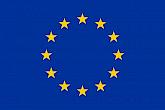
An endemic Chameleon from Madagascar. Photo: Luca Bertalli from Getty Images
i
Almost half of European households have pets, ranging from familiar cats and dogs to birds, fish and reptiles. Some of these are classified as "exotic pets”.
The European Union (EU) is a leading market for exotic pets, especially reptiles, ornamental birds, and fish (such as Bearded Dragons, macaws, and Indian Glassfish). If the idea of acquiring an exotic pet has crossed your mind, it's essential to find out, recognise, and follow the rules. It's not just about responsible ownership; it's about making informed choices to safeguard against the conservation, legal, health, and financial risks tied to purchasing exotic pets.
Although many exotic pets are traded legally, the EU consumer market is a major target for traffickers looking to abuse trade rules. Traffickers use e-commerce platforms, social media, fairs, and pet shops to access consumers who may unknowingly purchase an illegal animal.
Knowing the law is essential to avoid contributing to wildlife trafficking.
3,000
live birds, reptiles, and amphibians were seized in the EU annually (2018—2021)
Many of these were destined to be illegal exotic pets. But as large numbers go undetected, the true extent of the issue is likely far higher
For more information visit
CONSIDERATIONS TO MAKE IF PURCHASING AN EXOTIC PET
Think carefully before deciding to buy an exotic pet. Remember that exotic pets may grow quite large and live for a long time and require specific care! For instance, did you know some tortoises can live up to 100 years in captivity?
Consider the following aspects, keeping in mind the potential risks associated with owning a wild animal:
- Legal Acquisition: The trade in wild species is strictly regulated. Ensure the seller provides precise information about the animal, including its species, origin (captive-bred or wild), and legal documentation. Verify the information independently to confirm the seller's credibility and understand your legal responsibilities.
- Necessary Paperwork: The exotic pet trade involves mandatory paperwork and processes. Confirm that the seller provides all necessary documents, and ensure you obtain the required permits or certificates associated with the purchase.
- Health and Safety Requirements: Protect both animals and humans from health and injury risks. Source animals from reputable breeders or rescue centres to prevent potential zoonotic spillover.
- Risk of Invasiveness: Some exotic species can become invasive if released into the wild. This may have detrimental impacts on the native biodiversity through competition, predation, or transmission of pathogens. Ensure the animal is housed securely, preventing accidental escapes, and never release an exotic animal into the environment.
- Commitment to care: Owning an exotic pet requires time, knowledge, patience, financial resources, and ongoing commitment. Exotic pets may have complex needs, think carefully before making a decision.
- Sustainability: Research and be aware of the impact your purchase might have on species conservation. Consider whether the species is subject to commercial pressures or trends that may not be adequately addressed by current legislation.
- Raising Awareness: Share information about the risks associated with the illegal exotic pet trade and the requirements of responsible ownership with friends and family!
ABOUT THIS CAMPAIGN

The UNITE project
The UNITE project unites efforts between law enforcement authorities, NGOs, EU and international agencies, and the financial and private sector, to defeat environmental crime. It aims to defeat criminal networks involved in waste or endangered species trafficking, including illegal trade in timber, in and via the EU, and to recover the assets generated from these illegal activities.
The project is funded by the European Commission's Directorate General for Home Affairs via the Internal Security Fund – Police. It is led and implemented by the French Gendarmerie (OCLAESP), the Italian Carabinieri, the Guardia Civil (SEPRONA), the Hungarian and Slovak police forces and the NGOs IFAW, WWF Hungary, WWF France, WWF Belgium and TRAFFIC's in-kind support. UNITE can also count on the support of EUROPOL and CEPOL to achieve its objectives, as well as the 17 participating European countries: Austria, Belgium, Bosnia and Herzegovina, Czech Republic, France, Georgia Germany, Hungary, Italy, Macedonia, Malta, Netherlands, North Poland, Slovakia, Slovenia, Spain and Ukraine.
This publication was funded by the European Union’s Internal Security Fund – Police. Its content represents the views of the authors only and is their sole responsibility. The European Commission does not accept any responsibility for use that may be made of the information it contains.





